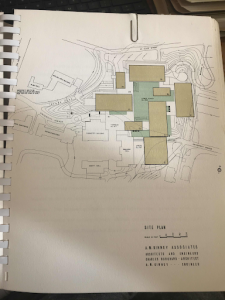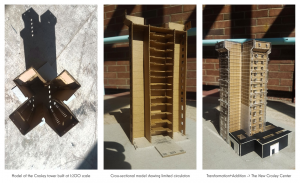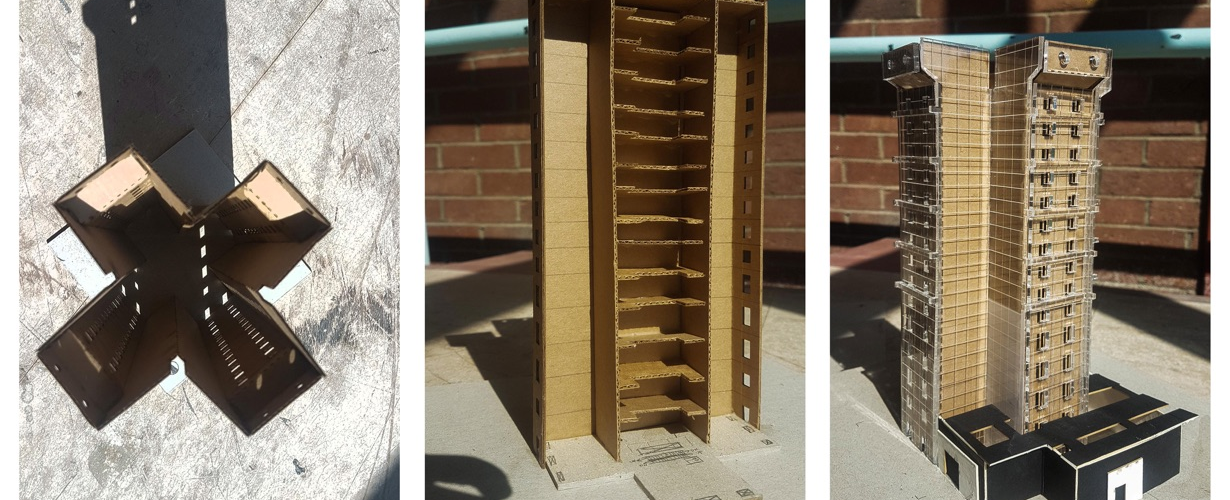The Crosley tower began as an architectural marvel created for the purpose of breaking the world record for the tallest single-pour concrete structure in the world. Set apart from the rest of the Neo-Georgian architecture found on campus, the tower is often described by the students of Cincinnati as “ugly” and “impractical.” Over the years, this once popular tower has become a source of social debates, worrying rumors, and expensive plans for demolition.

Benjamin Franklin famously once said, “but in this world nothing can be said to be certain, except death and taxes.” Clearly, he forgot the other certainty that people need to go to the bathroom at some point. Many who would visit Crosley Tower would note the odd placement of these essential rooms, and often it is hypothesised that the original plans forgot to include the restrooms till the last minute, and the builders had to do a quick fix in order to add the porcelain thrones.
In reality, the situation was not a costly, yet honest, mistake of improper planning, but a deliberate decision to support a skewed gender bias. Engineering has had a long running stigma of being a male-only occupation. During the design of the tower, the floor planners set aside only 6 of the planned 16 restrooms for females, with the other 10 being dedicated to male students. The restroom situation was left like this for a few years, agitating many female students. Later this issue was brought to the attention of the Office of University Commitment to Human Resources (OUCHR). The OUCHR mandated that both genders needed an equal amount of restrooms. While they got to work on the permanent solution of adding in new female delegated bathrooms, the temporary solution was simply to change the signs on the pre-existing restrooms. However, this caused confusion among the students due to the fact that they didn’t know where the new restrooms were located. In fact, some students felt slighted by the mandate and decided to steal the restroom signs, causing issues where males walked in on females and vice versa. While this was no doubt an awkward situation, many times the students did not care and simply go about their business. Despite solving the unequal bathrooms problem, it did not solve the fact that even though Crosley Tower was constructed to reach new heights for the university and the city, it has been treated more as an embarrassment in recent times. [1]

Most people would describe Crosley Tower as an eye-sore. The overall student perception of the building is what people describe as “soulless” and flat view. The buildings poor design is even more unappealing due to its neighboring buildings of DAAP, which has a more vibrant modern look, and Rieveschl, which has a simple and classic look. The tower itself is problematic, from it’s architectural style to even the materials used in it’s construction. Due to public opinion and outcry, the building has been planned for demolition since the early 2000s. One may notice that despite these plans being around for over 10 years, the building is still there. This is in large part due to the tower being made out of concrete. This means that the building cannot be imploded in fear of causing massive surrounding damage. The remaining option is to breakdown the building by using jackhammers from top to bottom due to its strength, but this is costly and dangerous to both the workers breaking the building down and the surrounding area.
No one can deny that Crosley Tower is iconic. Anyone approaching University of Cincinnati’s campus can instantly point out the grand tower, and has been a part of the UC skyline for over four decades. It has rumors and urban legends surrounding it, and is an interesting piece of Cincinnati history. However, times and opinions of the tower have changed, and many people have been calling for its removal for nearly a decade. Sadly, with the complications that would arise from removing the tower in both safety and cost, the Engineer’s dream turned nightmare may stay around for years to come.
Endnotes
[1] Brookbank, Sarah. “Crosley Tower Will Be Demolished … Eventually.” Cincinnati.com.
Cincinnati Enquirer, October 26, 2018. https://www.cincinnati.com/story/news/2018/10/26/crosley-tower-demolished-eventually/1759807002/.
[2] Vincent, Dan. “Women to Receive Equal·Restroom Space.” University of Cincinnati News
Record, April 27, 1976, Vol. LXIII edition, sec. no. 43.

